Laser Tattoo Removal in Metro Manila
Search and Compare the Best Clinics and Doctors at the Lowest Prices for Laser Tattoo Removal in Metro Manila

Find the best clinics for Laser Tattoo Removal in Metro Manila
With Medijump you can browse 3 facilities offering Laser Tattoo Removal procedures in Metro Manila. The cheapest price available is $180 in Metro Manila. And for the cheapest price globally, prices start from $3 in Vietnam.
Laser Tattoo Removal in Philippines
Price: $ 180
Laser Tattoo Removal in Metro Manila
Price: $ 180
Vietnam offers the best prices Worldwide
Price: $ 3
From 12 verified reviews
Kinny Salas, 18 March 2020
Reasonable price, very clean and relaxing. Best facials and they treated my hyperkeratosis and pigmentation
From 12 verified reviews
Kinny Salas, 24 February 2020
Reasonable price, very clean and relaxing. Best facials and they treated my hyperkeratosis and pigmentation
CorDerm Advanced Dermatology and Laser Center, located in Makati, Metro Manila, Philippines offers patients Laser Tattoo Removal procedures among its total of 18 available procedures, across 4 different specialties. The cost of a Laser Tattoo Removal procedure ranges from $180 to $540, whilst the national average price is approximately $180. All procedures and treatments are undertaken by just a small team of specialists, with 3 in total at the Clinic, and they have multiple recognized accreditations, including: WAAAM - World Anti-Aging Academy of MedicineISD - International Society of DermatologyPDS - Philippine Dermatological Society
- Home
- Philippines
- Metro Manila
Compare Before & After Photos of _procedure_photos.phpLaser Tattoo Removal
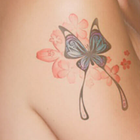

Front view
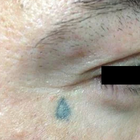
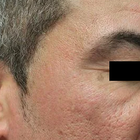
Half-side view
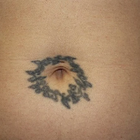

Front view

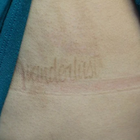
Front view
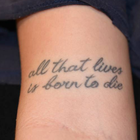
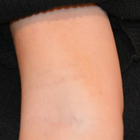
Front view

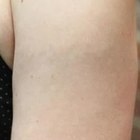
Full-side view
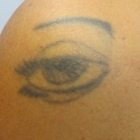
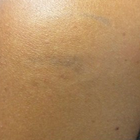
Front view
WHY US?
At Medijump, we're making medical easy. You can search, compare, discuss, and book your medical all in one place. We open the door to the best medical providers worldwide, saving you time and energy along the way, and it's all for FREE, no hidden fees, and no price markups guaranteed. So what are you waiting for?

Free

Best Price

Widest Selection

Risk-Free
What you need to know about Laser Tattoo Removal in Metro Manila
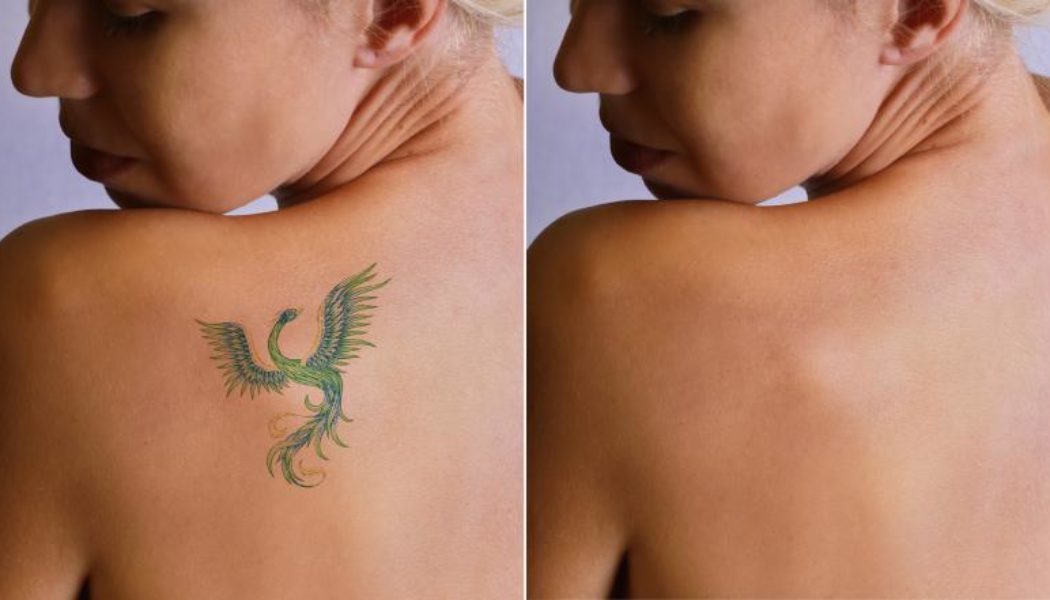
Laser tattoo removal is a technique to eliminate an unwanted tattoo with little to no side effects. It works by breaking up the pigment colors with a high-intensity light beam. You can undergo a laser tattoo removal if you regret having a tattoo, unhappy with the appearance of your tattoo, the tattoo causes infection, or you have an allergic reaction to the tattoo. Once you've done laser tattoo removal, your unwanted tattoo will be gone forever.
Grasping the notion that Laser Tattoo Removal is not a one-off activity, but instead encompasses an array of treatments distributed over multiple weeks, is crucial. Variables like the dimensions, hue, tattoo positioning, along with the person's general well-being determine the count of requisite sessions.
What is the cost of Laser Tattoo Removal in Metro Manila?
In Metro Manila, the Laser Tattoo Removal cost can greatly fluctuate. It hinges upon several considerations such as the size, emplacement, tattoo color, and the amount of needed therapy sessions. Other influencing factors are the laser technology utilized and the reputation of the clinic.
The majority of clinics in Metro Manila extend payment schemes and financing aids to render the process more financially manageable. Bear in mind, though, that Laser Tattoo Removal isn't typically included in medical insurance coverage as it's deemed a beauty-related procedure. Irrespective of the expenditure, it is vital to give precedence to first-rate care and the proficiency of the healthcare staff over cost-effectiveness.
What does a Laser Tattoo Removal Procedure Involve?
The process of Laser Tattoo Removal entails directing particular wavelengths of laser light on the tattooed part of the skin. A highly specialized laser is chosen depending on the colors present in the tattoo for carrying out this technique. The light pulses penetrate the skin's topmost layers to reach the tattoo's pigment. This energy from the light leads to the fragmentation of the tattoo ink into minute particles, which are gradually flushed out by the body's immunity system.
Most people do not need anesthesia, but you can ask for a topical or local anesthetic from your doctor. During the procedure, you will have to wear protective eye shields. Then, your doctor or technician uses a laser to bring pulses of intense light to the top layers of your skin and only the tattoo pigment will absorb this light. Depending on the size, color(s), and age of your tattoo, you might need more than one treatment session.
How Long Should You Stay in Metro Manila?
You can leave Metro Manila after your tattoo removal procedure. However, it may take several treatments to completely remove the tattoo. Given that everyone reacts distinctively, the process might necessitate anywhere from 3 to 10 visits. The interval between each treatment is around 7 weeks to allow the treated area enough time to heal. You are free to retreat to your home, or a place of your choosing, in between these sessions. This sequence persists until your tattoo is completely removed. Nevertheless, it is critical to resume your journey to Metro Manila for each forthcoming Laser Tattoo Removal.
What's the Recovery Time Like?
You will feel pain and discomfort for around a week, but your skin will completely heal in around six weeks. You should be able to go to work as long as you do not feel any pain or discomfort that interferes with your life.
Right after every session, you may observe minor swelling and a reddish tint on the manipulated area. These indications normally wane within a short span that can range from a few hours to two days and can be tamed with chilled packs and popularly accessible pain relievers. Evading exposure to sunlight and demanding activities in the initial few days is of utmost importance to forestall probative issues.
What sort of Aftercare is Required for Laser Tattoo Removal Procedures in Metro Manila?
Your doctor will give you aftercare instructions; make sure to follow the instructions. Keep the treated area clean, do not soak the area, and try to avoid popping blisters. If the treated area itches, apply hydrocortisone cream. Avoid smoking as it can reduce the effectiveness of laser tattoo removal by around 70%.
The treated region should also be protected from the sun and covered with a high SPF sunscreen because the skin will be more susceptible to UV deterioration. Additionally, avoiding activities that could result in significant sweating or close contact with the area of the skin that is receiving treatment is advised. You must avoid the impulse to pick or scratch at the treated area if you want the skin to heal properly. Finally, maintaining effective healing and general health requires drinking plenty of water and eating a diet that is nutritionally balanced.
What's the Success Rate of Laser Tattoo Removal Procedures in Metro Manila?
Laser tattoo removal is the most effective tattoo removal treatment with a success rate of over 95%. It's important to understand that when discussing tattoo removal, the term "effectiveness" typically refers to the degree of tattoo fading rather than complete tattoo removal. The depth, type, and concentration of the ink, the tattoo's colour, as well as the recipient's skin features and overall health, can all have an impact on the final design.
Are there Alternatives to Laser Tattoo Removal Procedures in Metro Manila?
Laser Tattoo Removal has evolved into a highly effective strategy for eliminating tattoos, but you're afforded various other alternatives if Laser Tattoo Removal does not align with your requirements. Intense pulsed light (IPL) therapy, for instance, where light pulses are deployed to dissolve the tattoo ink, could be a viable proposition particularly for larger tattoos. However, for heavily inked or deeper tattoo locations, IPL might not yield the desired outcome.
Dermabrasion is yet another alternative. It's a process that employs skin 'sanding' to eliminate the surface and middle skin layers. Compared to laser treatments, dermabrasion can be less comfortable and requires a more prolonged healing duration. In certain instances, it might also be viable to surgically remove the tattoo with a scalpel, but be prepared for the potential of scarring. Therefore, when deciding on the best course of action, it's important to discuss your unique requirements and expectations with a specialist.
What Should You Expect Before and After the Procedure
Before the Laser Tattoo Removal, there will be a discussion with the expert regarding your health history, the treatment information, and your anticipated outcomes. The area on which the tattoo is located must be hygienic and devoid of any ongoing skin issues. A topical anesthesia may be applied during the session for your comfort. The feeling you might experience when the laser is used could be likened to the feeling of a rubber band being flicked against your skin.
Post-treatment, the tattooed section may look inflamed and red, and it could feel a bit warm to the touch and tender. These symptoms should diminish over a few days. It is vital that you adhere to the follow-up care guidelines given by the clinic to ensure the best healing process and outcome. Generally, this requires cleanliness of the area, avoiding direct sun, and abstaining from activities that can irritate the skin. Regular check-ups of your healing process with your expert can assist with timely detection and management of any potential post-treatment issues.
What are Potential Risks of Laser Tattoo Removal?
Laser Tattoo Removal carries some side effects and risks, such as:
- Infection
- Hypopigmentation and hyperpigmentation (treated skin becomes significantly darker or lighter than its surroundings)
- Scarring, bleeding, swelling, and blisters
It's important that you get proper treatment by a reputable doctor to avoid these side effects and risks.
Whilst the information presented here has been accurately sourced and verified by a medical professional for its accuracy, it is still advised to consult with your doctor before pursuing a medical treatment at one of the listed medical providers
No Time?
Tell us what you're looking for and we'll reachout to the top clinics all at once
Enquire Now

Popular Procedures in Metro Manila
Prices Start From $28

Prices Start From $6,002

Prices Start From $278

Recommended Medical Centers in Metro Manila for Laser Tattoo Removal

- Interpreter services
- Translation service
- Religious facilities
- Medical records transfer
- Medical travel insurance
- Health insurance coordination
- TV in the room
- Safe in the room
- Phone in the room
- Private rooms for patients available

- Interpreter services
- Translation service
- Religious facilities
- Medical records transfer
- Medical travel insurance
- Health insurance coordination
- TV in the room
- Safe in the room
- Phone in the room
- Private rooms for patients available

- Interpreter services
- Translation service
- Religious facilities
- Medical records transfer
- Medical travel insurance
- Health insurance coordination
- TV in the room
- Safe in the room
- Phone in the room
- Private rooms for patients available

- Interpreter services
- Translation service
- Religious facilities
- Medical records transfer
- Medical travel insurance
- Health insurance coordination
- TV in the room
- Safe in the room
- Phone in the room
- Private rooms for patients available

- Interpreter services
- Translation service
- Religious facilities
- Medical records transfer
- Medical travel insurance
- Health insurance coordination
- TV in the room
- Safe in the room
- Phone in the room
- Private rooms for patients available

- Interpreter services
- Translation service
- Religious facilities
- Medical records transfer
- Medical travel insurance
- Health insurance coordination
- TV in the room
- Safe in the room
- Phone in the room
- Private rooms for patients available

- Interpreter services
- Translation service
- Religious facilities
- Medical records transfer
- Medical travel insurance
- Health insurance coordination
- TV in the room
- Safe in the room
- Phone in the room
- Private rooms for patients available

- Interpreter services
- Translation service
- Religious facilities
- Medical records transfer
- Medical travel insurance
- Health insurance coordination
- TV in the room
- Safe in the room
- Phone in the room
- Private rooms for patients available
Laser Tattoo Removal in and around Metro Manila
About Manila
Manila is the capital of the Philippines and is divided into 16 districts; it is one of the densest and populated cities of the world. Each district has its own history and cultural legacy. The city was under the rule of Spanish conquerors for almost three centuries. You can see the remains of that era in the ruins of the historical buildings. Today, the City is very modern with tall skyscrapers and modern architecture.
The Philippines is developing into one of the top countries in the world for medical tourism. Approximately 15 million people globally travel to other countries in search of quality medical care at affordable prices. Manila is a favorite destination due to the following reasons:
- It provides state-of-the-art procedures at affordable prices.
- With excellent infrastructure, the City can handle the large numbers of foreigners who visit Manila.
- The Hospital and clinic staff are very competent, friendly, and educated and have a good knowledge of English to communicate with their patients.
- The doctors are very well-qualified and hold international certifications.
- The city has a reputation in providing excellent post-surgical care by the nurses and physiotherapists.
- The Medical Industry provides many alternative therapies at some of the best spa resorts. You can combine a surgical procedure with alternative healing therapies at the same time.
Popular Areas in Manila
Manila Bay has many tourist spots and you will find many monuments that depict the Spanish occupation of the country. There are many Baroque Colonial Churches that will enable you to appreciate the artistic designs.
The National Museum of the Philippines, Bahay Chinoy, the National Art Gallery, and the Metropolitan Museum of Manila are some of the popular museums that you must visit in Manila. Rizal Park also known as Luneta is a historical urban park that is worth visiting.
There are also many organized tours that can help you get the best out of your sightseeing, for example, the Intramuros Tour, Rizal Park Tour, or the Skyscraper Gazing Tour and more.
Manila is a very modern contemporary city as the historical buildings have been replaced by modern architecture with better planning and layout and the buildings are earthquake resistant.
The city has many cultural and religious festivals throughout the year. There are plenty of shops, both big and small where you can buy branded goods at affordable prices.
Weather and Climate in Manila
The Philippines is a tropical country and in Manila, you will not experience too much temperature variations. January is the coolest month while May is the warmest month. The average temperature remains between 14°C and 38°C. The rainy season is between May and November. The rest of the months are dry. Manila is a humid city and bad weather such as Typhoons may occur during the months of June and September.
Getting around in Manila
People traveling from nearby countries such as Malaysia and Indonesia can use the City’s sea entry points. For all other passengers, the best option is to take the air route.
The Ninoy Aquino International Airport is the City’s major international airport. It has four different terminals that connect via bus transfers. If you are taking a connecting flight, remember to keep some time as a buffer, as transfers may force you to travel through the busy streets of Manila. Terminal 1 caters to International flights and Philippine Airlines uses T2 and domestic carriers and international carriers use T3 with budget carriers largely using T4.
You can take a bus from the airport to the city. Taxis have meters and you can hail a cab outside the airport. Buses and small vans or jeepneys are popular modes of transport within the city.
Manila has three light rail systems and one heavy train line. The light rail systems are the LRT-1, LRT-2, and MRT-3. You can also use the pedicabs and tricycles for shorter distances. In some areas, you can even find horse-driven carriages called calesa.
Tourist Visas in Manila
The visa process is not a very complex system as the Philippines has a visa waiver program for certain countries. All European nations, South American countries, and many others form part of this program. Citizens from these countries can stay in Manila for up to 30 days, whereas nationals from Brazil and Israel may stay in Manila for 59 days. Hong Kong, Macau, and Portugal residents can stay for 14 days without a visa. Tourists belonging to other countries need to apply for a visa to enter the Philippines, in the consulate in their respective countries.
You must also have a valid return ticket. Passport must also be valid for at least six months and beyond to stay in the country. Visa-exempt people may extend their stay by one or two months after which they will have to apply for a visa.
Additional Information
- The currency of the Philippines is Peso (symbol: ₱). It is strong in the world market and the usual exchange rate is 1 Dollar equals 50 Pesos. Dollars are easy to exchange compared to other currencies.
- Credit cards are acceptable in almost every place. The city also has many ATMs from where you can withdraw money without difficulty. However, ATMs will charge you a minimal exchange fee on foreign cards.
- Bargaining and negotiating are acceptable in most places and it can get you better deals.
- Restaurants may add a service charge of up to 10%. You can pay a cash tip of 5 to 10 %. People often round off the taxi fare.
- Manila is a city full of people who speak English proficiently. Filipino and English are the two official languages. Filipino is a variety of Tagalog, Austronesian languages.
- Hindu, Muslim, Buddhism, and Christian religions have left their mark on the Philippines at different periods. Today, a majority of the population is Roman Catholic.
- There are many public holidays in Manila. Some of the important ones are Christmas Eve, Christmas, Eid al-Fitr (Ramadan), Labor Day, New Year, and Good Friday, etc. The Independence Day falls on June 12th and Manila Day on 24th June.
Popular Searches
- Plastic Surgery in Thailand
- Dental Implants in Thailand
- Hair Transplant in Thailand
- Breast Augmentation Thailand
- Gastric Sleeve in Thailand
- Gender Reassignment Surgery in Thailand
- Laser Hair Removal in Bangkok
- Botox in Bangkok
- Dermatology in Bangkok
- Breast Augmentation in Bangkok
- Coolsculpting in Bangkok
- Veneers in Turkey
- Hair Transplant in Turkey
- Rhinoplasty in Turkey
- Stem Cell Therapy in Mexico
- Rhinoplasty in Mexico
- Liposuction in Mexico
- Coolsculpting in Tijuana
- Rhinoplasty in Korea
- Scar Removal in Korea
- Gastric Sleeve in Turkey
- Bone Marrow Transplant in India
- Invisalign in Malaysia
- Plastic Surgery in the Dominican Republic
- Tummy Tuck in the Dominican Republic
- Plastic and Cosmetic Surgery in Poland
- Rhinoplasty in Poland
- Hair Implant in Poland
- Dental Implants in Poland
- IVF in Turkey

